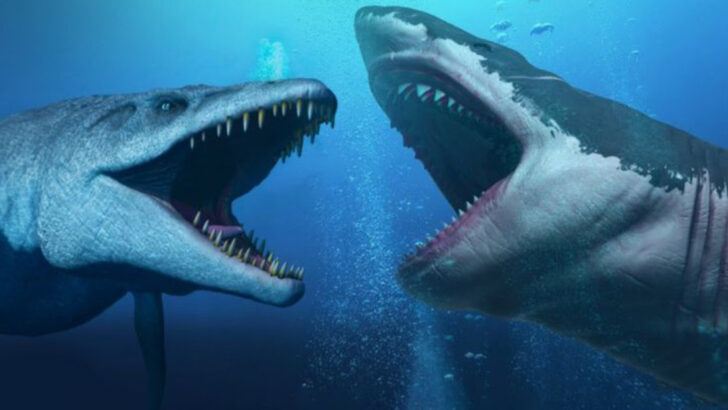One was a giant shark the size of a bus. The other was a sea reptile with jaws built to crush bone. And both ruled the oceans like underwater tyrants. While they never faced off in real life, the idea of Megalodon and Mosasaurus battling beneath the waves has captured imaginations everywhere. This isn’t just fantasy—fossils tell us exactly how terrifying each one was. Megalodon’s teeth could dwarf a grown man’s hand. Mosasaurus had double-hinged jaws and a tail like a torpedo. They swam in different eras, but each was the apex of its time. And now, paleontologists are piecing together how they hunted, what they feared (if anything), and who would win if time-travel threw them into the same sea. Let’s dive into the prehistoric showdown we never got—but science won’t let us stop thinking about.
Two Titans of Different Eras
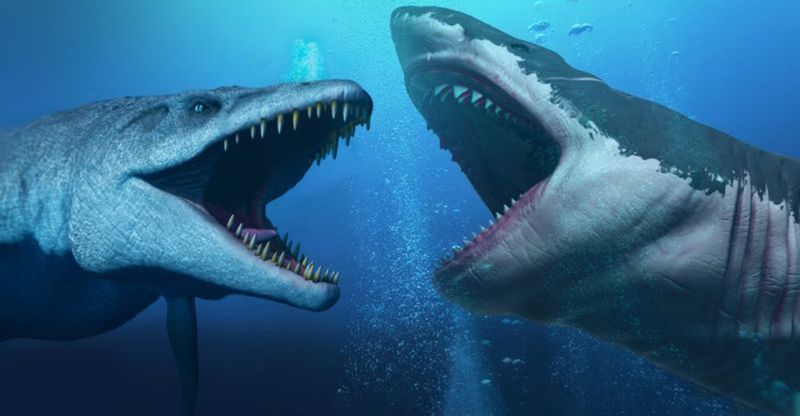
The prehistoric seas were ruled by giants of different eras, with Megalodon and Mosasaurus as their undisputed champions. Although they swam in oceans that were millions of years apart, the fascination with what might have been if these titans had clashed endures. Understanding these creatures offers a window into two major periods of marine history, each defined by its own apex predator.
As rulers of their respective domains, they showcase the evolutionary marvels of their times. This comparison illustrates the diverse paths evolution can take to dominate the same environment.
Megalodon: The Giant Shark That Owned the Miocene

With teeth the size of a human hand, Megalodon was the ultimate predator of the Miocene oceans. Its name, meaning “big tooth,” fits its nature perfectly. Estimates suggest Megalodon could grow up to 60 feet long, making it the largest shark ever to exist.
Its bite force, unrivaled by any known animal, was strong enough to snap a small car in two. This powerful hunter fed on large marine mammals, such as whales, demonstrating its dominance in its warm ocean habitat.
Its extinction remains a mystery, leaving behind only tantalizing clues.
Mosasaurus: The Cretaceous Sea Lizard
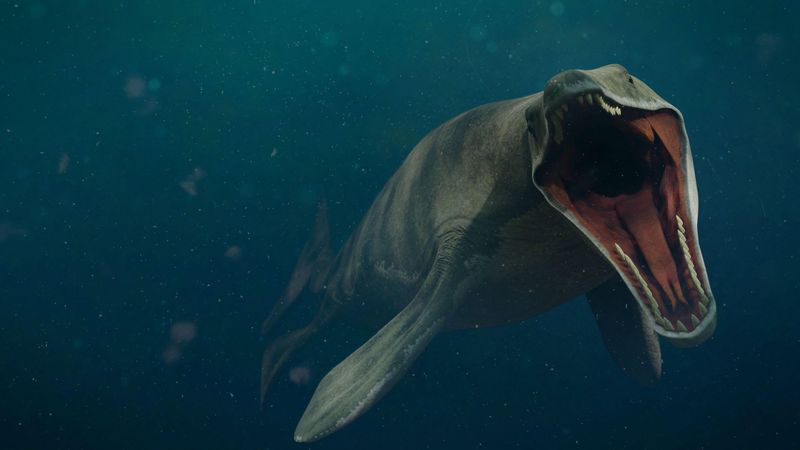
Mosasaurus, the formidable sea lizard of the Cretaceous, was a fearsome marine reptile. Not a dinosaur, but instead related to modern monitor lizards, it reached over 50 feet in length. Its double-hinged jaws, lined with backward-curving teeth, made it an efficient predator.
This agile creature could launch ambush attacks with its muscular tail, capable of swift and precise movements. It preyed on a variety of marine life, including sharks and even other mosasaurs.
Its fossils tell a story of adaptation and survival in the ancient seas, a true testament to its evolutionary success.
Where They Lived and Hunted

The Cretaceous seas provided a playground for Mosasaurus, thriving in warm, shallow waters from Europe to North America. In contrast, Megalodon roamed the warm subtropical oceans of a later era, often found in overlapping geographic regions.
While they never coexisted, their fossil records allow scientists to piece together the ancient environments they dominated. Imagining these two apex predators alongside each other offers a fascinating insight into oceanic evolution.
Their habitats, although similar, were separated by millions of years, illustrating the dynamic nature of Earth’s marine history.
Strengths and Weaknesses
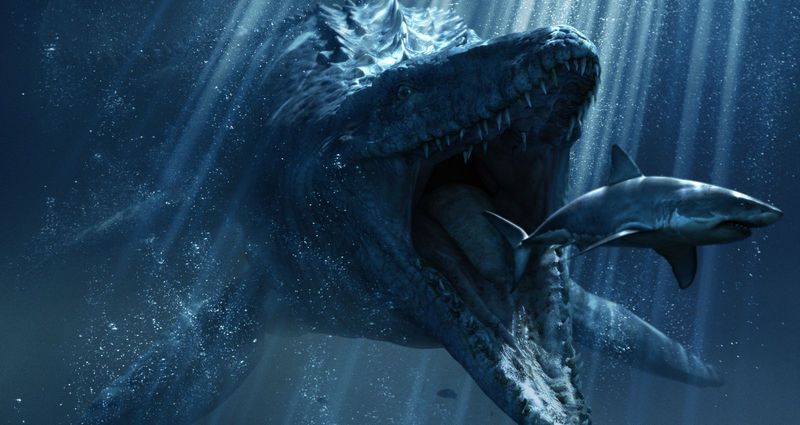
Megalodon, with its colossal size and stamina, excelled in open water chases, a perfect hunter for large, fast-moving prey. Conversely, Mosasaurus possessed agility and speed, performing complex underwater maneuvers, making it deadly in confined spaces.
The potential showdown between these giants would have depended heavily on the environment. In open waters, Megalodon’s power could dominate, while in tight reef systems, Mosasaurus’s agility might prevail.
These differences highlight how evolution tailored each creature to their specific ecological niches, solidifying their places as kings of their domains.
What Fossils Tell Us
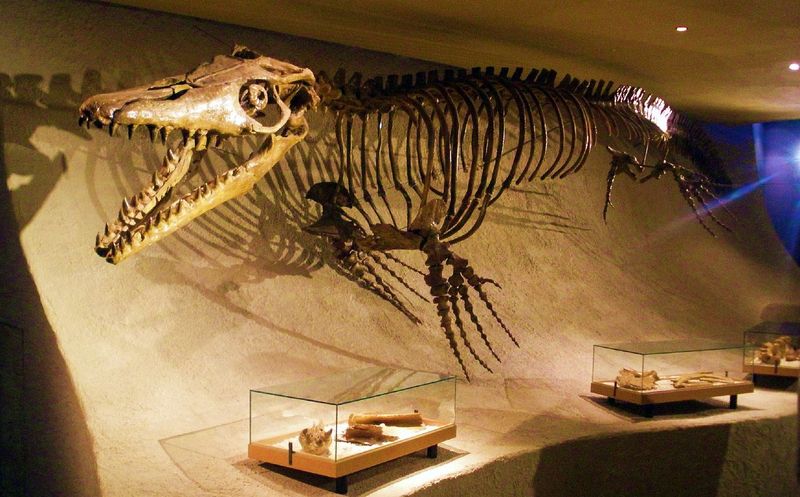
Fossils serve as the silent storytellers of the prehistoric world. Megalodon teeth, some larger than a person’s hand, have been found across the globe, indicating a wide-ranging habitat. In contrast, Mosasaurus skulls with snake-like jaws reveal a fearsome predator, complete with remnants of its last meal.
These fossils allow paleontologists to reconstruct the lives and behaviors of these creatures, providing vital clues to their dominance in ancient ecosystems.
Their fossilized remains not only inform us of the past but also inspire curiosity about Earth’s evolutionary history.
The Verdict From Science
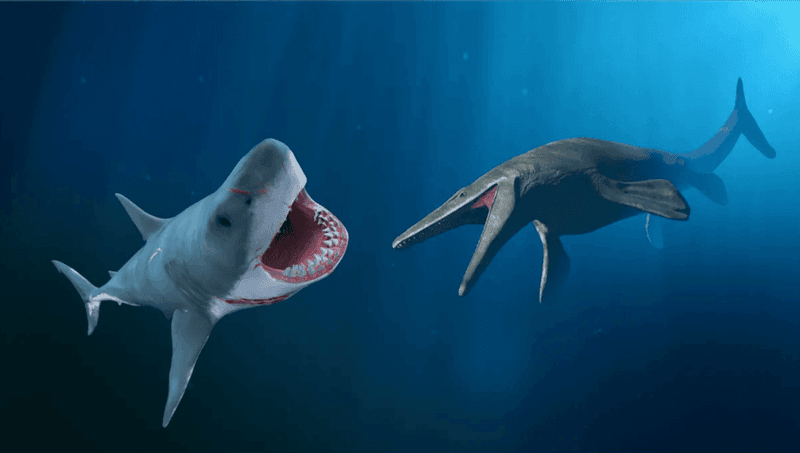
In the realm of scientific inquiry, the comparison between Megalodon and Mosasaurus transcends a simple face-off. Each was a master of its era, crafted by evolution to dominate their respective environments. Science doesn’t pit them against each other but rather celebrates their unique adaptations.
Their fossil records illuminate a world long gone, reminding us of the dynamic nature of life on Earth. Rather than a battle, they represent a continuum of evolutionary success, shaping the oceans of their times.
Their stories, etched in stone, continue to captivate and educate.

